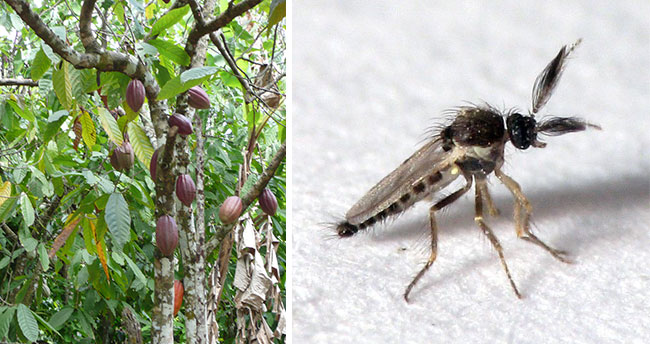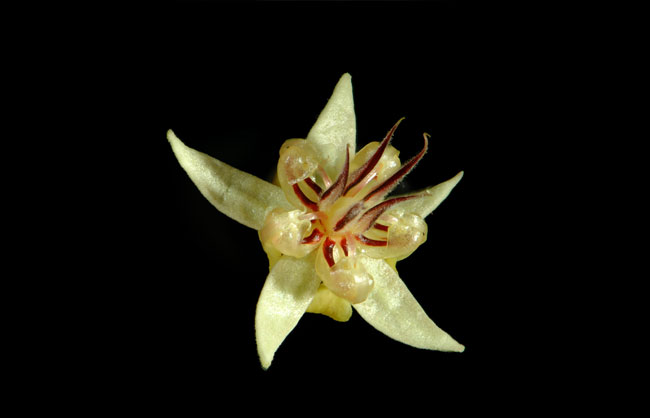Today, many of us are strategically navigating a heart-shaped box of assorted chocolates hoping to avoid the weird crème filled in favor of the delicious toffees and nougats. This delicious gift, and all of our other favorite chocolate fixes, come from cacao (or chocolate) trees, which depend on insect pollination to set fruits that contain the seeds (cacao beans) used to make chocolate. Unlike many crops, cacao flowers are pollinated by flies, an important, though often neglected group of pollinators. So this Valentine’s Day, we celebrate the romantic tale of flies and plant sex, with the timely example of the tree that brings us chocolate.
When it comes to foods people feel passionate about, chocolate has few rivals. The cacao tree is a small tropical evergreen tree that grows best in the shade of taller trees. It was given the scientific name Theobroma cacao by botanist Carl Linnaeus. Chocolate lovers will agree this name is well-suited. Theobroma translates to “food of the gods” in Latin, and cacao is derived from the Nahuatl (Aztec) word xocolatl meaning “bitter drink”, which is thought be the origin of the word “chocolate.” Although chocolate can be made with beans from most Theobroma species, T. cacao is the only species widely cultivated for commercial production.

The relationship between cacao flowers and their pollinators is a complicated affair. Cacao trees are not able to self-pollinate, and for years, it was unknown how pollen was moved between flowers of different trees. Despite their dependence on pollinators to set fruits, cacao flowers play hard to get. The small white flowers are foul smelling or odorless, and at first glance, it does not seem the flowers provide nectar to attract insect visitors. Upon closer inspection, microscopic nectaries can be found on the stems and base of the flowers. The flowers also have a complex form that is difficult for insects to navigate. Basically, the flowers are not particularly attractive to insects…except for a few tiny flies.

Flies that pollinate cacao flowers belong to the family Ceratopogonidae, collectively referred to as biting midges. Biting midges are often perceived as pests (you know, the things we call no-see-ums, gnats, sand flies, or punkies). As the name suggests, some species bite and feed on blood of warm-blooded animals. While a few species may be bothersome to humans, most are beneficial, and they all contribute to biodiversity. Biting midges are distributed worldwide, but only a few pollinate cacao trees earning the designation “chocolate midges” (certain species of Forcipomyia and Euprojoannisia). Immature stages of chocolate midges develop in moist habitats with decomposing matter, such as rotting wood, cocoa husks, or other detritus, and adult females require liquid plant food for survival and oviposition. These flies are the size of a pinhead (1–4 mm, less than 1/6 inch), so it is no wonder their role as pollinators remained a mystery for so long. Their size is a favorable quality, as the diminutive cacao flowers require a pollen vector small enough to access the flower, but big enough to contact reproductive flower parts. Other small insects may contribute to pollination, though, as the full story of cacao pollination is still under investigation. However, numerous authorities agree that midges are the main pollinators of cultivated cacao trees.
To put it simply, no flies means no chocolate. So don’t forget to give the flies of the world some love!




